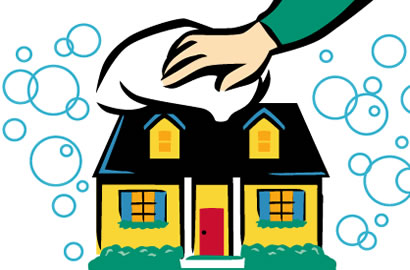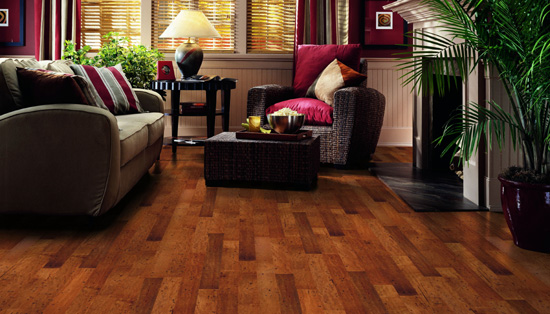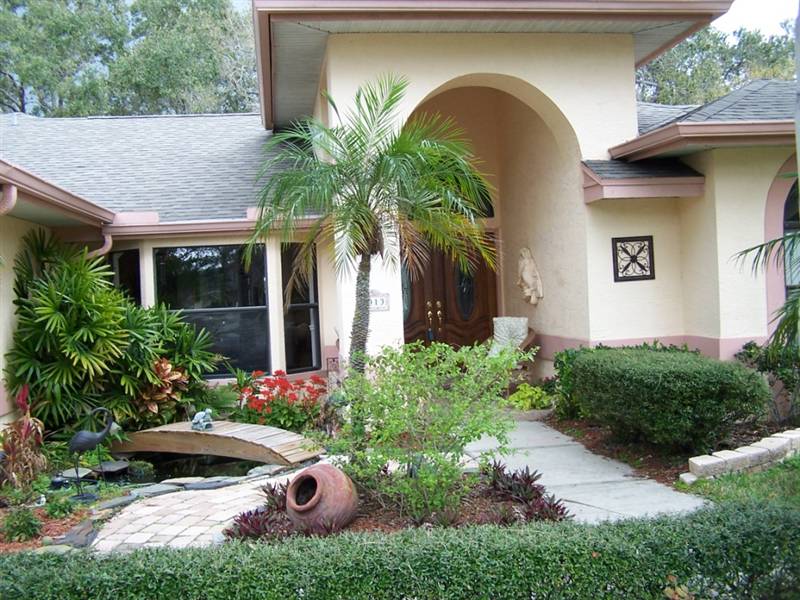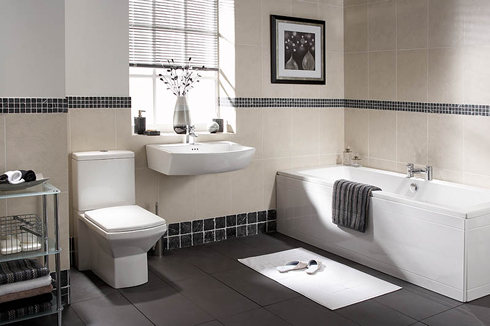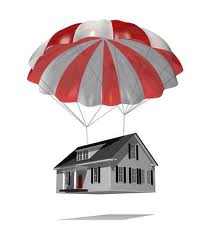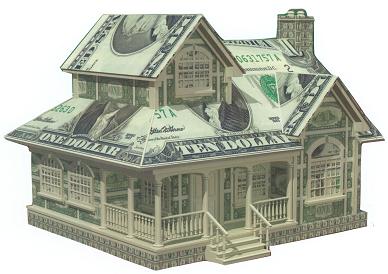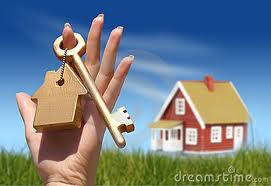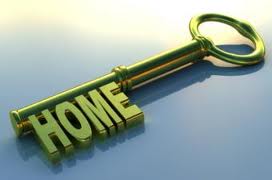
BLOG
Clean Home, Easy Sale
One of the biggest problems people run into when selling their home is the process of preparing it for sale. The best way to begin this process is to take a quick walk through your home then call me for an appointment! Laura Key 310.866.8422
One of the biggest problems people run into when selling their home is the process of preparing it for sale. Many homes are simply places where we keep the accumulated treasures of the years. Are you a clutter-bug, a pack-rat? It's OK, we all are to some degree. When preparing a home for sale, we need to be mindful of our "stuff." The best way to begin this process is to take a quick walk through your home. Make a list of everything that you have not used in the past 3 months, 6 months? Now, and here is the hard part. Get rid of it. Seem a bit extreme? It might, but things that you have not used in half a year are not likely to get used in the future. Remember we are trying to get rid of some stuff so that people can see the house, not what's in it.
There is a common line of thought that home buyers want to see the "personality" of the homes current owners. This is not true. Buyers want to be able to see their belongings in the home. They want to put their personality into it to see if they could see themselves living there. A backlog of your stuff will get in the way of them doing this. Go through every room in turn and remove the clutter! This includes the closets, shelves and cupboards. Also remove excess furniture if the room seems too crowded. Here is another important thing to remember, don't put all this stuff in the garage! Buyers will go through the garage like any other room in your home. Hire a storage locker if it is really necessary. Aside from that, use this as an opportunity to rid yourself of those things that you never use.
The minimalist approach is a good thing to utilize when showing your home. The lack of personal effects will make it easier for buyers to place themselves in your home. This will also make the moving process easier on you. With less things to pack when moving day comes, you can dedicate more time to creating your perfect space in your new home.
Laura Key, BRE 01908085 310.866.8422 Laura.A.Key@gmail.com www.KeyCaliforniaHomes.com
More Sellers Jump Into Favorable Market
More sellers are ready to put their homes on the market for the awaiting buyers. They are getting top dollar! If you have been thinking of selling, give me a call for a FREE Comparative Market Analysis and let's begin the process! Laura Key 310.866.8422
Inventories of for-sale homes are increasing as more owners see rising home prices and faster sales as a reason to try to sell now, according to industry reports.
In April, the number of listings was higher than the level of homes that were under contract in that month, according to a study by the real estate brokerage ZipRealty, which measured listings in 24 major metro markets.
“It’s less of an indication of buyer momentum flagging and more of seller momentum picking up, finally,” says Lanny Baker, the company’s chief executive.
The reports find that homes are selling faster—on average, within 32 days of being listed. In April 2012, that average stood at 48 days for homes to sell.
“A market in which the sale prices are happening very close to the list prices, a market in which the list prices seem to be moving sequentially higher, and a market in which any of those houses are selling speedily is one that is bringing sellers back,” Baker says. “That makes it feel to a seller that this isn’t going to be a long passive despair that I tried three years ago.”
Source: “Why More Sellers Could Test the Market,” The Wall Street Journal (June 10, 2013)
Want an estimate of what your California home is worth? Fill out the form below! All info is confidential and will not be sold!
[contact-form][contact-field label='Name' type='name' required='1'/][contact-field label='Email' type='email' required='1'/][contact-field label='Address' type='text' required='1'/][contact-field label='City%26#x002c; State%26#x002c; Zip' type='text' required='1'/][contact-field label='Number of Bedrooms' type='text' required='1'/][contact-field label='Number of Bathrooms' type='text' required='1'/][contact-field label='When are you interesting in putting your home on the market?' type='select' options='0-3 Months,4-6 Months,7-9 Months,10-12 Months'/][contact-field label='Please enter any other important features about your home? Upgrades%26#x002c; Garage%26#x002c; etc.' type='textarea' required='1'/][/contact-form]
Return to 'Buyer's Market' Still Years Away
Even though it's tough for buyers right now, I never say it's IMPOSSIBLE! Buyer who are patient and stay the course can find a home! Call me today! Free Homebuyers classes coming soon! Register Now! Laura Key 310.866.8422
It may be two to three more years before prospective home buyers get a break from escalating property prices and tight supply, according to experts speaking at a National Association of Real Estate Editors conference Wednesday.
That is the time frame for institutional speculators, who currently are dominating the market, to pull out of their investments and still make a profit, explained Bill Rayburn of the mortgage technology firm FNC. The market also will need to see the return of individual home buyers in order to normalize, he said, which will be propelled by employment gains.
Source: "Better Times for Home-Buyers Will Take a Few Years, Experts Say," Los Angeles Times (June 5, 2013)
Search for homes now...It's FREE!
When It Comes to Wood Floors, Choose Wisely
Rich wood flooring can spell instant warmth and patina in a home. Here’s an overview that can help you evaluate if wood floors are right for you! Laura Key 310.866.8422
Just as with ties and hem lengths, wood flooring styles change. Colors get darker or lighter; planks get narrower or wider; woods with more or less grain show swings in popularity; softer or harder species gain or lose fans; and the wood itself may be older, newer, or even pre-engineered with a top layer or veneer-glued to a substrate to decrease expansion and contraction from moisture.
Here are key categories for consideration:
Solid Plank
This is what some refer to as “real” wood because the wood usually ranges from three-eighths to three-quarters of an inch in total thickness to permit refinishing and sanding. Thicker floors have a thicker wear layer to allow for more frequent refinishing and sanding, so they can withstand decades of use, says architect Julie Hacker of Stuart Cohen and Julie Hacker Architects. It also can be stained, come from different species of tree, and be sold in numerous widths and lengths:
- Width and length: Designer Steven Gurowitz, owner of Interiors by Steven G., is among those who prefers solid flooring for many installations because of its rich, warm look. Like other design professionals, he’s seeing greater interest in boards wider than the once-standard 2 ¾ to 3 ¾ inches — typically 5 to 6 inches now but even beyond 10 inches. And he’s also seeing corresponding interest in longer lengths, depending on the species. Width and length should be in proportion. “The wider a board gets, the longer the planks need to be, too, and in proportion,” says Chris Sy, vice president with Carlisle Wide Plank Floors. These oversized dimensions reflect the same trend toward bigger stone and ceramic slabs. The downside is greater cost.
- Palette: Gurowitz and others are also hearing more requests for darker hues among clients in the northeastern United States, while those in the South and West still gravitate toward lighter colors. But Sprigg Lynn, on the board of the National Wood Flooring Association and with Universal Floors, says the hottest trend is toward a gray or driftwood. Handscraped, antique boards that look aged and have texture, sometimes beveled edges, are also become more popular, even in modern interiors, though they may cost much more.
- Species and price: Depending on the preference of the stain color, Gurowitz favors mostly mahogany, hickory, walnut, oak, and pine boards. Oak may be the industry’s bread and butter because of the ease of staining it and a relatively low price point. A basic 2 ¼-inch red oak might, for instance, run $6.50 a square foot while a 2 ¼-inch red oak that’s rift and quartered might sell for a slightly higher $8.50 a square foot.
- Maintenance: How much care home owners want to invest in their floors should also factor in their decision. Pine is quite soft and will show more wear than a harder wood like mahogany or walnut, but it’s less expensive. In certain regions such as the South, pine comes in a harder version known as heart pine that’s popular, says Georgia-based designer Mary Lafevers of Inscape Design Studio. Home owners should understand the different choices because they affect how often they need to refinish the wood, which could be every four to five years, says Susan Brunstrum of Sweet Peas Design-Inspired Interior. Also, Sy says that solid planks can be installed over radiant heating, but they demand expert installation.
Engineered Wood
Also referred to as prefabricated wood, this genre has become popular because the top layer or veneer is glued to wood beneath to reduce expansion and contraction that happens with solid boards due to climatic effects, says Sy, whose firm sells both types. He recommends engineered, depending on the amount of humidity. If home owners go with a prefabricated floor, he advises a veneer of at least one-quarter inch. “If it’s too thin, you won’t have enough surface to sand,” he says. And he suggests a thick enough substrate for a stable underlayment that won’t move as moisture levels in a home shift.
His company’s offerings include an 11-ply marine-grade birch. The myth that engineered boards only come prestained is untrue. “They can be bought unfinished,” he says. Engineered boards are also a good choice for home owners planning to age in place, since there are fewer gaps between boards for a stable surface, says Aaron D. Murphy, an architect with ADM Architecture Inc. and a certified Aging in Place specialist with the National Association of Home Builders.
Reclaimed Wood
Typically defined as recycled wood — perhaps from an old barn or factory — reclaimed wood has gained fans because of its aged, imperfect patina and sustainability; you’re reusing something rather than cutting down more trees. Though less plentiful and more expensive because of the time required to locate and renew samples, it offers a solid surface underfoot since it’s from old-growth trees, says Lynn. Some companies have come to specialize in rescuing logs that have been underwater for decades, even a century. West Branch Heritage Timber,for instance, removes “forgotten” native pine and spruce from swamps, cuts them to desired widths and lengths, and lays them atop ½-inch birch to combine the best of engineered and reclaimed. “The advantage is that it can be resanded after wear since it’s thicker than most prefabricated floors, can be laid atop radiant mats, and doesn’t include toxins,” Managing Partner Tom Shafer says. A downside is a higher price of about $12 to $17 a square foot.
Porcelain “Wood”
A new competitor that closely resembles wood, Gurowitz says porcelain wood offers advantages: indestructibility, varied colors, “graining” that mimics old wood, wide and long lengths, quickness in installation, and no maintenance. “You can spill red wine on it and nothing happens; if there’s a leak in an apartment above, it won’t be destroyed,” he says. Average prices run an affordable $3.50 to $8 a square foot. The biggest downside? It doesn’t feel like wood since it’s colder to the touch, Lynn says.
Bottom Line
When home owners are making a choice or comparing floors, Sy suggests they ask these questions:
1. Do you want engineered or solid-based floors, depending on your home’s conditions?
2. Do you want a floor with more natural character, or less?
3. What board width do you want?
4. How critical is length to you in reducing the overall number of seams?
5. What color range do you want — light, medium, or dark?
6. Do you want more aggressive graining like oak or a mellower grain like walnut?
7. Do you want flooring prefinished or unfinished?
8. How thick is the wear layer in the floor you’re considering, which will affect your ability to refinish it over time?
9. What type of finish are you going to use? Can it be refinished and, if so, how?
10. For wider planks that provide greater stability: Where is the wood coming from, how is it dried, what is its moisture content, and what type of substrate is used in the engineered platform?
Thinking of selling your home? A little investment can increase your resale value! Call me for a personal consultation! Laura Key 310.866.8422
Does HUD Offer Special Programs for Homebuyers?
Buying a HUD Home is not as difficult as you may think! I have helped many people purchase their 1st Home from HUD! Call me today for more details about the process! Laura.A.Key@gmail.com or Visit my website to sign up for FREE HUD Listings! http://www.KeyCaliforniaHomes.com
Yes, HUD offers a program called the GOOD NEIGHBOR NEXT DOOR PROGRAM for Police Officers, Firefighters, EMT and Teachers! Call for more details on this program! 310.866.8422. If foreclosures are not sold within six months, HUD will sell them for $1 each to approved nonprofit organizations and government agencies. Homes must then be used create housing for families in need or to benefit neighborhoods.
Los Angeles HUD homes, Buying A Hud Home, North Hollywood HUD homes, Westchester HUD Homes, Gardena HUD Homes, Northridge HUD Homes, Santa Clarita HUD Homes, Simi Valley HUD homes, Lemert HUD Homes, Compton HUD Homes, Lynwood HUD Homes, Hawthorne HUD Homes, Inglewood HUD Homes, Baldwin Hills HUD Homes, Playa del rey HUD homes, Marina del Rey HUD Homes, Santa Monica HUD homes, Lakewood HUD homes, Buying A HUD Home, Buying a Los Angeles HUD Home, HUD Trained Agent, HUD NAID agent, Good Neighbor Next Door
Does HUD Offer Financing On Their Homes?
Buying a HUD Home is not as difficult as you may think! I have helped many people purchase their 1st Home from HUD! Call me today for more details about the process! Laura.A.Key@gmail.com or Visit my website to sign up for FREE HUD Listings! http://www.KeyCaliforniaHomes.com
HUD does not provide direct financing to buyers of HUD Homes. Buyers must obtain financing through either their own cash reserves or a mortgage lender. If you have the necessary available cash or can qualify for a loan (subject to certain restrictions) you may buy a HUD Home. While HUD does not provide direct financing for the purchase of a HUD Home, it may be possible for you to qualify for an FHA-insured mortgage to finance the purchase.
Los Angeles HUD homes, Buying A Hud Home, North Hollywood HUD homes, Westchester HUD Homes, Gardena HUD Homes, Northridge HUD Homes, Santa Clarita HUD Homes, Simi Valley HUD homes, Lemert HUD Homes, Compton HUD Homes, Lynwood HUD Homes, Hawthorne HUD Homes, Inglewood HUD Homes, Baldwin Hills HUD Homes, Playa del rey HUD homes, Marina del Rey HUD Homes, Santa Monica HUD homes, Lakewood HUD homes, Buying A HUD Home, Buying a Los Angeles HUD Home, HUD Trained Agent, HUD NAID agent
Do I Need An Appraisal On A HUD Home?
Buying a HUD Home is not as difficult as you may think! I have helped many people purchase their 1st Home from HUD! Call me today for more details about the process! Laura.A.Key@gmail.com or Visit my website to sign up for FREE HUD Listings! http://www.KeyCaliforniaHomes.com
It is not necessary to have a HUD home independently appraised, HUD offers an appraisal every 6 months. Your Lender may require a more current appraisal than the one provided by HUD. Ask your loan officer or HUD registered agent.
Los Angeles HUD homes, Buying A Hud Home, North Hollywood HUD homes, Westchester HUD Homes, Gardena HUD Homes, Northridge HUD Homes, Santa Clarita HUD Homes, Simi Valley HUD homes, Lemert HUD Homes, Compton HUD Homes, Lynwood HUD Homes, Hawthorne HUD Homes, Inglewood HUD Homes, Baldwin Hills HUD Homes, Playa del rey HUD homes, Marina del Rey HUD Homes, Santa Monica HUD homes, Lakewood HUD homes, Buying A HUD Home, Buying a Los Angeles HUD Home, HUD Trained Agent, HUD NAID agent
How Much Money Will I Have to Put Down on a HUD Home?
Buying a HUD Home is not as difficult as you may think! I have helped many people purchase their 1st Home from HUD! Call me today for more details about the process! Laura.A.Key@gmail.com or Visit my website to sign up for FREE HUD Listings! http://www.KeyCaliforniaHomes.com
If the bid price is less than $50,000, you’re required to make an earnest money deposit of $500. HUD homes priced greater than $50,000 require a $1000 deposit.
Los Angeles HUD homes, Buying A Hud Home, North Hollywood HUD homes, Westchester HUD Homes, Gardena HUD Homes, Northridge HUD Homes, Santa Clarita HUD Homes, Simi Valley HUD homes, Lemert HUD Homes, Compton HUD Homes, Lynwood HUD Homes, Hawthorne HUD Homes, Inglewood HUD Homes, Baldwin Hills HUD Homes, Playa del rey HUD homes, Marina del Rey HUD Homes, Santa Monica HUD homes, Lakewood HUD homes, Buying A HUD Home, Buying a Los Angeles HUD Home, HUD Trained Agent, HUD NAID agent
Should I Get A Home Inspection If I Am Buying A HUD?
Buying a HUD Home is not as difficult as you may think! I have helped many people purchase their 1st Home from HUD! Call me today for more details about the process! Laura.A.Key@gmail.com or Visit my website to sign up for FREE HUD Listings! http://www.KeyCaliforniaHomes.com
HUD does not warrant the condition of its properties and will not pay for the correction of defects or repairs. Since the new owner will be responsible for making needed repairs, HUD strongly urges every potential homebuyer to get a professional inspection prior to submitting an offer to purchase.
If you are interested in acquiring a HUD Home that is in need of repair, you may be interested in applying for an FHA 203(k) Rehabilitation Loan. When a homebuyer wants to purchase a house in need of repair or modernization, the homebuyer usually has to obtain financing first to purchase the dwelling; additional financing to do the rehabilitation construction; and a permanent mortgage when the work is completed to pay off the interim loans with a permanent mortgage. Often the interim financing (the acquisition and construction loans) involves relatively high interest rates and short amortization periods. The Section 203(k) program was designed to address this situation. The borrower can get just one mortgage loan, at a long-term fixed (or adjustable) rate, to finance both the acquisition and the rehabilitation of the property.
Will HUD make the repairs?
HUD homes are sold as-is. The new owner is responsible for all repairs and improvements.
Can I start improving on the property right away?
If HUD accepts your offer, you cannot make any repairs or home improvements until the escrow transaction has closed and title is recorded in your name.
Los Angeles HUD homes, Buying A Hud Home, North Hollywood HUD homes, Westchester HUD Homes, Gardena HUD Homes, Northridge HUD Homes, Santa Clarita HUD Homes, Simi Valley HUD homes, Lemert HUD Homes, Compton HUD Homes, Lynwood HUD Homes, Hawthorne HUD Homes, Inglewood HUD Homes, Baldwin Hills HUD Homes, Playa del rey HUD homes, Marina del Rey HUD Homes, Santa Monica HUD homes, Lakewood HUD homes, Buying A HUD Home, Buying a Los Angeles HUD Home, HUD Trained Agent, HUD NAID agent
Is There Anyway To Have My HUD Offer Considered Before Others?
Buying a HUD Home is not as difficult as you may think! I have helped many people purchase their 1st Home from HUD! Call me today for more details about the process! Laura.A.Key@gmail.com or Visit my website to sign up for FREE HUD Listings! http://www.KeyCaliforniaHomes.com
Owner occupants always have first priority; however, if there are not any bids after the 30th day then bidding is open to all bidders (investors). All offers are due by the bidding date and the HUD system generally picks the highest and best offer.
Los Angeles HUD homes, Buying A Hud Home, North Hollywood HUD homes, Westchester HUD Homes, Gardena HUD Homes, Northridge HUD Homes, Santa Clarita HUD Homes, Simi Valley HUD homes, Lemert HUD Homes, Compton HUD Homes, Lynwood HUD Homes, Hawthorne HUD Homes, Inglewood HUD Homes, Baldwin Hills HUD Homes, Playa del rey HUD homes, Marina del Rey HUD Homes, Santa Monica HUD homes, Lakewood HUD homes, Buying A HUD Home, Buying a Los Angeles HUD Home, HUD Trained Agent, HUD NAID agent
Making an Offer On A HUD Home?
Buying a HUD Home is not as difficult as you may think! I have helped many people purchase their 1st Home from HUD! Call me today for more details about the process! Laura.A.Key@gmail.com or Visit my website to sign up for FREE HUD Listings! http://www.KeyCaliforniaHomes.com
Buyers will want to make offers based on ‘as-is’ appraisals determined by HUD. HUD will accept no offers that are lower than 50 percent of their appraisal. If you offer more than the appraisal price, you will be required pay the amount of the over-bid at closing, as your lender will base their loan amount on the appraised value of the home. Also, the process is a bit different than a regular offer on property. Your offer will be submitted online and government forms will be used to conduct the transaction.
Los Angeles HUD homes, Buying A Hud Home, North Hollywood HUD homes, Westchester HUD Homes, Gardena HUD Homes, Northridge HUD Homes, Santa Clarita HUD Homes, Simi Valley HUD homes, Lemert HUD Homes, Compton HUD Homes, Lynwood HUD Homes, Hawthorne HUD Homes, Inglewood HUD Homes, Baldwin Hills HUD Homes, Playa del rey HUD homes, Marina del Rey HUD Homes, Santa Monica HUD homes
When Can I Bid on a HUD Home?
Buying a HUD Home is not as difficult as you may think! I have helped many people purchase their 1st Home from HUD! Call me today for more details about the process! Laura.A.Key@gmail.com or Visit my website to sign up for FREE HUD Listings! http://www.KeyCaliforniaHomes.com
Owner occupants can offer a bid on a HUD home during the first nine days. HUD will look at all bids on the 10th day and decide based on which offer gives them the highest net profit. If there are two or more bids at the same net to HUD the offers will go into a lottery and the bid will be awarded based on chance. After the 10th day if there aren’t any acceptable bids there will be an additional 20 days of bidding where bids are opened and reviewed daily for owner
Los Angeles HUD homes, Buying A Hud Home, North Hollywood HUD homes, Westchester HUD Homes, Gardena HUD Homes, Northridge HUD Homes, Santa Clarita HUD Homes, Simi Valley HUD homes, Lemert HUD Homes, Compton HUD Homes, Lynwood HUD Homes, Hawthorne HUD Homes, Inglewood HUD Homes, Baldwin Hills HUD Homes, Playa del rey HUD homes, Marina del Rey HUD Homes, Santa Monica HUD homes
Market Chips Away at Foreclosure Inventory
Come and stake your claim in sunny California! Laura Key 310.866.8422
The number of nationwide completed foreclosures fell 19 percent year-over-year, according to the latest report by CoreLogic, reflecting February data. There were 54,000 completed foreclosures in the country in February, the lowest level since September 2007.
Still, foreclosures are elevated by historical standards. In a more balanced market, completed foreclosures tend to average about 21,000 per month — less than half where they are at today.
As of February, about 1.2 million homes were in some state of foreclosure. The nation’s foreclosure inventory has fallen 21 percent in the past year, according to CoreLogic. February marked the 16th consecutive month in which the foreclosure inventory has fallen.
“We continue to see a declining trend in foreclosure activity, with major markets leading the way,” says Anand Nallathambi, president and CEO of CoreLogic. “The drop in delinquencies and foreclosure starts will help support a resurgence in the home-purchase market this year and next.”
The five states with the highest number of foreclosures for the past year, according to CoreLogic’s February data, were:
- Florida
- California
- Michigan
- Texas
- Georgia
These states accounted for nearly half of all completed foreclosures nationwide over the past year.
On the other hand, the states with the lowest number of completed foreclosures were:
- District of Columbia
- Hawaii
- North Dakota
- Maine
- West Virginia
Source: “CoreLogic Reports 54,000 Completed Foreclosures in February,” RISMedia (April 1, 2013) and CoreLogic
5 Things You Forgot to Clean in Your Bathroom
Your bathroom, one of the rooms you clean most, hides areas that rarely see a scrub brush. It’s time to tackle these 5 nasty spots you probably forgot.
But we presume you or someone else regularly swishes out the toilets, wipes out the tubs and sinks, and mops your bathroom flooring.
But you may be missing some critical areas. With the help of Kristi Mailloux, president ofMolly Maid, we’ve compiled a list of 5 bathroom spots home owners often forget to clean:
1. Showerheads: A warm white vinegar bath will get rid of mineral deposits, making yourlow-flow shower head flow even lower. Let the showerhead soak for about 20 minutes, then poke a paperclip into shower head holes still clogged. Scrub with an old toothbrush, then rinse and repeat if necessary.
2. Toilet bases: Mildew can grow on the caulking around the base of your toilet. Spray with white vinegar or disinfecting household cleaner, then scrub with a hard-bristled brush. Dry thoroughly.
3. Shower curtains: Clean soap scum and mildew from plastic shower curtains by tossing them into your washer on the gentle and cold (never hot!) water cycle, with detergent and ½ cup vinegar. If mildew is present, add ½ cup of bleach instead of vinegar. Toss a couple of large towels into the machine to act as scrubbers. Hang curtains back on your shower curtain rod, spread them out, and let them drip-dry. If you turn on the bathroom fan, they’ll dry faster.
4. Drains: We don’t usually pay much attention to drains until they’re clogged. But all year your hair, toothpaste, shampoo, and conditioner are building up in sink and tub drains. Remove the stopper — unscrew the shower drain — and clear away obvious gunk, like hair and soap. Soak the drain in vinegar to clear away mineral deposits. Then, pour boiling water, or a mixture of ½ cup white vinegar and ½ cup baking soda, down the drain, which will bubble away crud sticking to pipes.
5. Medicine cabinet: Throw out prescription and over-the-counter drugs you no longer need or want. But don’t dump them down the drain, where they become part of the watershed, or into the trash, where anyone can fetch them out. Instead, take them to a local collection site, often at police or fire stations. Or check U.S. Drug Enforcement Administration’s National Take Back Initiative’s website for dates and sites for their next collection.
Bonus tip: Just for the fun of it, launder those powder room towels you won’t let anyone use. And be sure to clean out your dryer’s lint filter when you’re finished.
Source: houselogic.com written by Lisa Kaplan Gordon Published March 30, 2012
Selling your home is a big decision! Make sure you have someone who can help you get the most value out of your home! Call me today at 310.866.8422 Laura Key
1.7 Million Home Owners Regain Equity in 2012
Remember when you asked me if the market has hit bottom yet? Yes Sir - Yes Ma'am we have and now it's bouncing back up! Hurry and get your property before it's too late! Laura Key 310.866.8422
Rising home prices have helped more home owners make their way above water again, with 1.7 million residential properties regaining equity in 2012, according to the latest figures from CoreLogic. The number of mortgaged home owners with equity now stands at 38.1 million.
More home owners are expected to soon join them: About 1.8 million homes will regain equity if home prices rise by another 5 percent—which most economists have forecast for this year.
“In the fourth quarter we again saw an improvement in the equity position of households,” says Mark Fleming, chief economist for CoreLogic. “Housing market improvements, particularly in the hardest hit states, are the catalyst for households to regain equity and become participants in 2013’s housing market.”
While the numbers are improving, many home owners are still underwater: About 21.5 percent—or 10.4 million—of all residential properties with a mortgage still retained negative equity at the end of the fourth quarter of 2012. That number is down 22 percent, year-over-year.
Nevada has the highest percentage of homes with negative equity (at 52.4%), followed by Florida (40.2%), Arizona (34.9%), Georgia (33.8%), and Michigan (31.9%). These five states alone account for 32.7 percent of the total amount of negative home equity in the U.S., according to CoreLogic.
Some additional findings from CoreLogic’s latest report:
- The majority of homes that have equity tend to be on the higher end of the real estate market. Eighty-six percent of homes valued at more than $200,000 have equity, compared to 72 percent of home less than $200,000.
- About 3.9 million home owners with negative equity have both first and second liens. Their average mortgage balance is $296,000 and their average underwater amount is $80,000.
Source: CoreLogic
Cleaning House: Secrets of a Truly Deep Clean
Spring Cleaning Tips to help keep your home in tip-top shape! These little tips also help when you are selling a home! Buyers want to see a clean home that they can imagine living in! Call me today for your free home evaluation! Laura Key 310.866.8422
Deep clean your house and you’ll brighten rooms and help maintain your home’s value.
De-bug the light fixtures
See that bug burial ground within your overhead fixtures? Turn off the lights and carefully remove fixture covers, dump out flies and wash with hot soapy water. While you’re up there, dust bulbs. Dry everything thoroughly before replacing the cover.
Vacuum heat vents and registers
Dirt and dust build up in heat vents and along register blades. Vents also are great receptacles for coins and missing buttons. Unscrew vent covers from walls or pluck them from floors, remove foreign objects, and vacuum inside the vent. Clean grates with a damp cloth and screw back tightly.
Polish hardware
To deep clean brass door hinges, handles, and cabinet knobs, thoroughly wipe with a damp microfiber cloth, then polish with Wright’s or Weiman brass cleaner ($4). Dish soap shines up glass or stainless steel knobs. Use a Q-tip to detail the ornamental filigree on knobs and handles.
Replace grungy switch plates
Any amateur can wipe a few fingerprints off cover plates that hide light switches, electric outlets, phone jacks, and cable outlets. But only deep cleaners happily remove plates to vacuum and swipe the gunk behind. (OK, we’re a little OCD when it comes to dirt!) Make sure cover plates are straight when you replace them. And pitch plates that are beyond the help of even deep cleaning. New ones cost less than $2 each.
Neaten weather stripping
Peeling, drooping weather stripping on doors and windows makes rooms look old. If the strip still has some life, nail or glue it back. If it’s hopeless, cut out and replace sections, or just pull the whole thing off and start new. A 10-ft. roll of foam weather stripping costs $8; 16-ft. vinyl costs about $15.
Replace stove drip pans
Some drip pans are beyond the scrub brush. Replacing them costs about $3 each and instantly freshens your stove.
Source: Houselogic.com By Jane Hoback Published Jan 14, 2011
4 Reasons Your Listing Might Not Be Selling
Real Estate could be one of your major investments! Make sure you get the most value on return. Interested in seeing how much your home is worth? Call me for a FREE Comparative Market Analysis. Laura Key 310.866-8422
Do you have a home lingering on the market? MSN Real Estate recently polled real estate professionals to find some of the most common reasons why some properties won’t sell, besides trying to overcome a poor location.
Here are four common reasons listings don’t sell in a timely manner, according to the MSN survey:
- Unreasonable price: “It’s always price for condition or price for location,” says Kathy Opperman, a broker-owner with Century 21 Alliance in Philadelphia. “That’s one of the main reasons [homes] sit.” Some sellers are just unrealistic about what their house can truly fetch, or they may be underwater and just unable to lower their price tag. “In my market, the only reason a property would stay on the market for longer than three months would be that the price is too high,” Ron Redfern, a real estate professional from Greeley, Colo., told MSN Real Estate. “Price will overcome any objection.”
- Bad decor: Loud patterns, bold colors, and dated decor styles can distract home buyers. For example, agents say that mirrored walls, cheap wood paneling, and 1970s kitchens can be turn-offs. To try to appeal to the widest buying pool, agents advise clients to stay neutral with their design, give buyers a “minimalist canvas” for them to project their own tastes on.
- Awkward floor plan or missing necessities: Strange or dated floorplans may also make a home linger, such as older homes where you have to walk through a bedroom to get to a second bedroom, MSN Real Estate notes. One home in Catskill, N.Y., has lingered on the market for more than four years because it’s missing a driveway.
- Awful photos: If your listing has yet to sell, you may want to revisit the photos you're using to present it on the MLS. For example, one Chicago listing showed dirty clothes and clutter in the photo, which may prompt buyers to question the hygiene of the rest of the home, as well as assume it has a lack of storage. Be choosy about the photos you upload to the MLS, and remember that less can be more, Opperman says. Have photos showcase the best rooms and features of the home. "If a buyer isn't excited about a home after seeing it online, they won't want to see it in person," Opperman says.
Source: “Listing Losers: 8 Reasons Your Home Isn’t Selling and What to do About It,” MSN Real Estate (March 13, 2013)
Fast California Real Estate Stats
The market has changed! What does this mean to you as a buyer or a seller? Ask me! Laura.A.Key@gmail.com or 310.866.8422
- Calif. median home price: January 2013: $337,040 (Source: C.A.R.)
- Calif. highest median home price by region/county January 2013: Marin, $799,110 (Source: C.A.R.)
- Calif. lowest median home price by region/county January 2013: Madera, $98,330 (Source: C.A.R.)
- Calif. Pending Home Sales Index: December 2012: 82.3 , down 20.5 percent from November's 103.5.
- Calif. Traditional Housing Affordability Index: Fourth quarter 2012: 48 percent (Source: C.A.R.)
- Mortgage rates: Week ending 3/7/2013 30-yr. fixed: 3.52% fees/points: 0.7% 15-yr. fixed: 2.76% fees/points: 0.7% 1-yr. adjustable: 2.63% Fees/points: 0.3% (Source: Freddie Mac)
After Central Air, Buyers Want Walk-In Closets
I have to agree with this article. What is more important to you for your new home? Laura.A.Key@gmail.com
Recent home buyers who want a walk-in closet but didn’t get one in their home say they’re willing to spend $1,350 for one. That’s just one of the important findings in the 2013 Profile of Buyers’ Home Feature Preferences, released today by the National Association of REALTORS®.
Buyers who wanted new kitchen appliances but didn’t get them say they’re willing to spend $1,840 for them. Those who wanted air conditioning are willing to spend $2,520.
The report looks at 33 home feature preferences based on what a representative sample of U.S. households that bought between 2010 and 2012 say they value. Just over 2,000 households participated.
Among the findings: Households in the South tend to want the biggest and newest homes, and they like wooded lots. Those in the Northeast are most likely to like hardwood floors. First-time buyers and single women are big buyers of older homes. Households with children and move-up buyers like larger homes.
The report also contains these tidbits on buyer preferences:
· Among buyers 55 and older, 42 percent want a single-level home, compared to just 11 percent of buyers under age 35. Single women also tend to place importance on single-level homes.
· Single men want finished basements.
· Single men and married couples place importance on new kitchen appliances.
· Among all 33 home features in the survey, central air conditioning is the most important to the most buyers; 65 percent consider this very important.
· The next most important feature is a walk-in closet in the master bedroom; 39 percent considered this very important.
· Also important — buying a home that’s cable-, satellite TV-, or Internet-ready.
· Thirty-two percent of buyers say they’re willing to pay a median of $5,420 more for a residence that also has waterfront property, and 40 percent say they’re willing to pay a median of $5,020 more for a home that’s less than five years old.
— Robert Freedman, REALTOR® Magazine
Ready to find your dream home! Search for free! No signup, no hassle, just a good solid resource. Let me earn your business! www.KeyCaliforniaHomes.com
How to De-Crapify Your Home
While it's no epidemic, it's hard to argue that most of us have a little "too much stuff". Whether you've got a little or a lot more clutter than you'd like in your home, here's a start-to-finish look at how to streamline your Spring cleaning.
Getting rid of your stuff can be difficult. Things have value to you, whether you've formed a personal attachment to your stuff or you believe you'll have a practical use for it... someday. Most of the time, "personal value" means guilt and "someday" never comes.
We're not talking about going ultra-minimalist here, but rather making a concentrated effort to only keep the things in your life that you use and actually matter to you. To do this, we're first going to take a look at identifying the crap in your home, then how to get rid of it so you're not always just throwing it away, and finally discuss some methods for actually maintaining your crap-free lifestyle. Let's get to it.
Identify the Crap
Some crap is easy to identify, like a corporate t-shirt that's several sizes too big and you forgot about its existence, or that birthday card from 1994 that you're afraid your grandmother will ask about next time she visits. If you still have any of this kind of stuff, stop reading this post and go out into the yard and burn it. (Don't actually do this—it's illegal.) Now that you've gotten rid of your easily identifiable crap, we can start working on the rest—deciding what can stay and what can go.
Step 1: Sort It Out
With each category, sort every item into one of three piles: the stuff you're going to keep, the stuff you're going to get rid of, and the stuff you're not sure about. Be ruthless: When's the last time you used that bulky electric juicer? What are the chances you're going to start using it in the future? Is it really worth keeping around?
When you're done sorting, go through the pile of items you're not sure about and try to get rid of about half of it. One simple decision-making factor: find similar items and pick the one you like the best, get rid of the rest.
Now that you've made a mess of your home by tossing your stuff into piles on the floor, it's time to put it all back again. First put the stuff you're getting rid of in a cardboard box, trash bag, or whatever you prefer so long as it's clearly moving on to its next life. Next, put all the stuff you're keeping back where it belongs and admire all the new, empty space you've created. Last, grab all the things you're not sure about and put them somewhere separate. If you're hanging clothes, hang these items in another area of a closet or place them in a separate drawer. Do not keep them with the stuff you're sure you want to keep. Keep track of whether or not you use any of them over the next 30 days. If you do, you can put it back with the stuff you want to keep. If you don't, you're getting rid of it when the 30 days are up.
Step 2: Repeat Step One
No, not right away. You've just had to part with a bunch of things you think you care about, so you're clearly not in the emotional state to handle another tumultuous breakup with your possessions. Wait 30 days and repeat the process. After a month, when time has healed your wounds, you'll find it much easier to let go of even more things you don't need. You might even like it. It's nice having more space in your home, and once you realize 1) that you like it and 2) you don't miss anything you tossed, you'll have a much easier time getting rid of more things you don't need.
Step 3: Remove the One-Offs
By the time you've made it to this final step, you've probably gotten rid of most of your unnecessary crap. What's left are the things you don't have too much of but still find taking up unnecessary space in your home. Do you have an electric guitar you never play because you said you'd take lessons four years ago but never got around to it? Identify anything like that guitar and mark it for deletion. In the next section, we're going to look at the best options you have for actually getting rid of all the stuff you identified in these three steps.
Get Rid of the Crap
When you're getting rid of your things, you have a couple of options. Obviously you can throw things away, but if you have anything in good condition you can also sell it or donate it. Some specific items may also find a new life in the digital world, or you may have friends who want some of your things. In this section we're going to take a look at the best ways to finally let go.
Donate to the Needy (or Not-So-Needy)
If you just hate doing good and helping other people is too selfless, you can always win favor with your friends by giving them your potentially useful-to-them crap. Every friend wants to get a call asking them if they want an old pair of gym shorts or your extra copy of Serial Mom on DVD. Sometimes you will have some things your friends can benefit from, so don't hesitate to set them aside to ask. If they don't want them, you can always just suck it up, be a good person, and donate to someone in need who has yet to experience Serial Mom while wearing your old gym shorts.
Sell, Sell, Sell
If you're going to sell your stuff, the most obvious option is to use Craigslist and/or eBay. You'll want to use Craigslist for things like furniture or larger items you won't want to ship. You may also prefer to sell your gadgets and other technology there as well, especially if you don't have the box. eBay is always an option, but it's not as good of market as it once was for this kind of sell-off.
In addition to the obvious, you have Amazon and Gazelle for certain items in your inventory. First, Amazon will buy your old electronics for money to spend at Amazon. Additionally, a service called Fulfilled by Amazon can make the process of selling through the retail giant much less work. Fulfilled by Amazon is a service that lets you drop ship your stuff to Amazon, who then lists it on their product pages, ships out the items for you just like the item was purchased from them directly, and deposits the money from the sale in your checking account (after taking their commission, of course). You still have to add all the items to your inventory yourself, but if you're getting rid of a lot of stuff this is a huge time-saver and doesn't cost much more than if you did all the hard work. While you won't be able to get rid of everything this way, as the sock puppet you made in 2nd grade isn't a currently listed product, you can sell quite a few of your possessions and make a fair amount of pocket change in the process.
If you want to do even less work, and you have a lot of technology to get rid of, Gazelle is a good option. Because their site is geared towards selling your gear, it's very easy to search for what you want to get rid of, specify the condition, and get a quick quote. It's also pretty easy to find a Gazelle coupon that will get you an extra 5%. If you're really lazy, Gazelle will send you a box and pick it up so you can continue your life in solitude with minimal interruption.
Amazon and Gazelle are both great options if you want to save yourself some time, but if you want to put in the effort to make as much money as possible then be sure to read our guide to selling your gadgets for more tips.
Go Digital
A lot of the crap you have in your home can fit on a hard drive if you're willing to put in the effort (or pay someone to put in said effort for you). If you have old items you want to keep but would be willing to toss if you had a digital version, you should read out guide on digitzing your life. Nothing saves space like getting rid of stacks of photos, old VHS tapes, and other stuff with your worst enemy: sentimental value.
Throw It Away
This is really easy, because you may already have it in a trash bag. Take that bag to the curb, toss it in a nearby dumpster, or just feed it to the monster that lives under you bed. Actually, throwing things away is not always so easy if you want to do it as safely as possible. Your technology, for example, doesn't sit so well when buried in the planet. If it's something you can recycle, take the effort to recycle it. Or don't. Sites like Gazelle will take your dead technology off your hands, and you can find recycling centers at both the EPA and Earth911.
Maintain Your Crap-Free Existence
Congratulations. If you've made it here, your home is crap free. If you just skipped to this section without doing anything, that congratulations is rescinded—but your curiosity is commendable. It's a huge accomplishment to de-crapify your entire home, but all that effort is wasted if you can't maintain a crap-free lifestyle. For that, you need some rules, policies, and tricks to ward off the excess stuff that once plagued your life.
You may have heard that you should toss it if you haven't used it in the last year. This is true, but that's a very reasonable attitude to take with your stuff. If you have a tendency to keep things you don't need, you need policies a bit more strict and timely than that. Live by these instead:
- When you get something new, you have to get rid of something old. It doesn't have to be the same type of item, but it should take up approximately the same amount of space (or more).
- Set an expiration date on anything you notice you haven't used in awhile. So you remember, set a reminder on your calendar or put a post-it note on that item with an expiration date. If you see it again and that date has passed, it's time to let it go.
- Don't buy anything new until you've considered whether or not you need it for 48 hours. (Obvious exceptions include more urgent things like broccoli, hemorrhoid cream, and tickets to the midnight screening of the next big disappointing comic book film.)
- Get organized in ways that help you better use everything you still have. Organize your refrigerator like a supermarket. Organize your kitchen like a programmer. Organize your clothing by color, like in a clothing store, so it's easy to find what you're looking for. You get the idea.
Cleaning can be hard when it means getting rid of things you've come to love over the years, but chances are you'll come to love the extra space even more. Hopefully this guide will help you get your crap under control and out of your home. If you have any great de-crapifying suggestions of your home, be sure to share them in the comments.
Source: lifehacker.com; Article written by: Adam Dachis
Get the most for your home! The cleaner, more organized, less cluttered houses on the market get the buyers! Call me today and let's get started with your plan! Laura Key 310.866.8422
